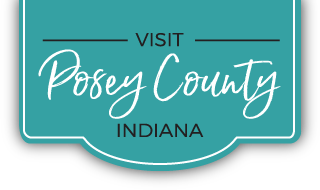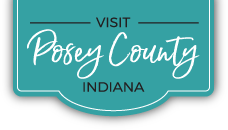


 The Working Men’s Institute (WMI) and Library in New Harmony is a must-see for any visitor to Posey County. In addition to housing Indiana’s longest serving library, the upstairs museum, which is half-jokingly referred to as “New Harmony’s Attic” contains a fascinating collection of historical relics, both natural and man-made. On the same floor, the Murphy Gallery features classic classic fine art paintings collected over the years and contemporary work by the Italian artist Franco Prosperi.
The Working Men’s Institute (WMI) and Library in New Harmony is a must-see for any visitor to Posey County. In addition to housing Indiana’s longest serving library, the upstairs museum, which is half-jokingly referred to as “New Harmony’s Attic” contains a fascinating collection of historical relics, both natural and man-made. On the same floor, the Murphy Gallery features classic classic fine art paintings collected over the years and contemporary work by the Italian artist Franco Prosperi.
WMI was founded in 1838 by William Maclure, an intellectual titan of his time who came to New Harmony on the boatload of knowledge. He was a scientist, geologist, and the President of the Academy of Natural Sciences in Philadelphia. Among his many accomplishments, he created the first geologic map of the United States, after which he came to be known as the “father of American geology.”
The museum’s collection started with plant and animal specimens Maclure had collected. Later, local native American artifacts were added. Over the years, people donated their prized family heirlooms and other items they had collected over the course of their lives. It includes many artifacts from the civil war, including the bones of “Old Fly,” a cavalry course that was ridden by a local soldier in the Civil War, and other old items of war such as guns and swords. Generations of local kids fondly remember the two headed, eight legged calf that’s been preserved.
The Murphy Gallery is named for a local 19th century doctor who commissioned copies of famous Renaissance masterpieces and hung them in the large, ornate gold frames that were popular at the time. The contemporary collection displays works of well-known local artists, as well as that of Prosperi.
William McClure, who shared many ideas about education with Robert Owen, felt that the education system of the time served only the wealthy. He described WMI’s purpose as “the dissemination of useful knowledge to working men and their families.” In addition to being a library, WMI held lectures and workshops on things such as blacksmithing and agriculture that working people could apply to their jobs and would ultimately allow them to better provide for their families, and for for betterment of community. The idea was a big success, at first, as a total of 144 other WMI’s were created soon after the one in New Harmony. Unfortunately for those 144 other towns, New Harmony was not home to just the first Working Men’s Institute, but is now the home of the last.
The WMI of today continues that tradition, continuing to provide lectures and workshops for the local community, and disseminating knowledge and culture through its library, museum and gallery.
Working Men’s Institute
407 Tavern Street
New Harmony, Indiana 47631
(812) 682-4806


